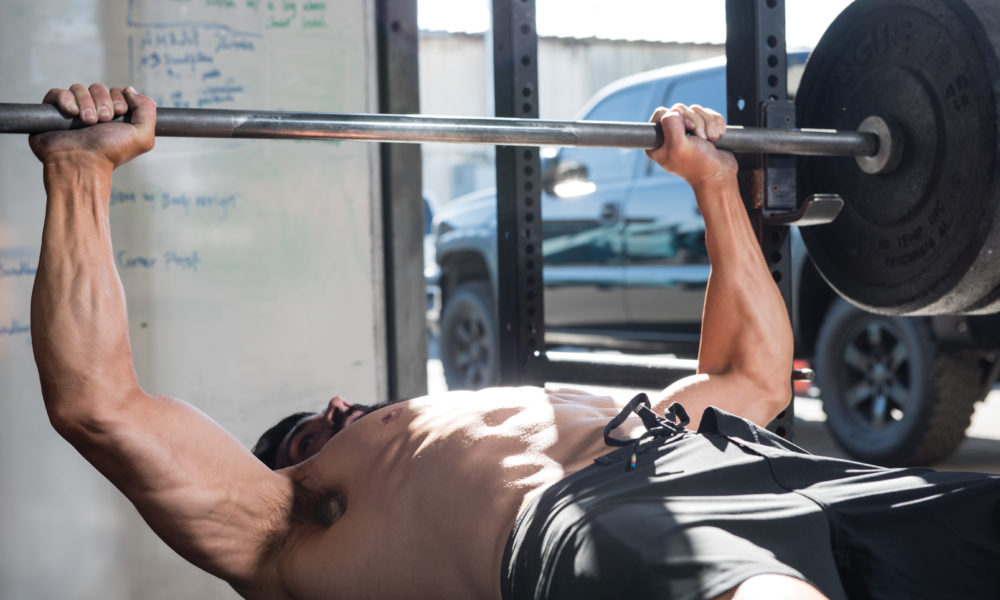

If you aren’t doing these five underrated exercises, you better start now.
By Nick Nilsson
You want to build serious mass. You want to get “forklift” strong. But are you doing the right exercises you should be performing in order to maximize your results?
We all can get stuck in a rut doing our favorite exercises: the ones we’re strong at and the ones that feel good. However, staying too focused on just a selection of favorite exercises is holding you back from achieving your true physique. These five exercises will help unlock that potential.
Heavy Lockout Bench Presses
The lockout bench press, when done properly and for the right reasons, is not just an ego lift; it has a real purpose and provides amazing benefits. Partial training (i.e., lifting a heavier-than-normal weight in a short range of motion) can substantially increase both connective tissue strength (tendons and ligaments) and high-threshold motor unit activation. Your body doesn’t function in terms of “full” range of motion. All it knows is load, and it specifically adapts to the loads you place on it.
When you get stuck in a plateau with your bench press, you might naturally think it’s your muscles that have hit their limit. That’s not always the case. If your connective tissue has not been strengthened at the same rate relative to your muscle strength, your body will actively put the brakes on your strength gains in an attempt to avoid injury to the connective tissue, which is now the weak link in the chain.
Then we have your nervous system. Submaximal loads will not fully activate all your high-threshold motor units. It’s the reason why a one-rep max bench press is a very different lift than a 10-rep max bench press. Supramaximal loading over a partial range of motion will train those high-threshold motor units.
To perform this exercise, I absolutely recommend using a power rack—this will allow you to operate with the greatest safety. Advanced lifters who know their limitations can rely on a set of J-cups. For anyone else, I suggest getting inside the power rack and setting the safety rails to just below your lockout height on the bench press. Using just the empty bar, test the range to make sure you have at least three to five inches of movement. When you load the bar heavy, the weight will tend to “flatten” your body and that range will drop even more.
Make sure you lock down everything in your body when you prepare to move the weight. When you press, imagine pushing your body down through the bench, not moving the weight off the rails. Hold at the top for several seconds so that your connective has a chance to feel the load. Then lower back down to the rails. Perform four to six reps per set. Hold each lockout for three to five seconds
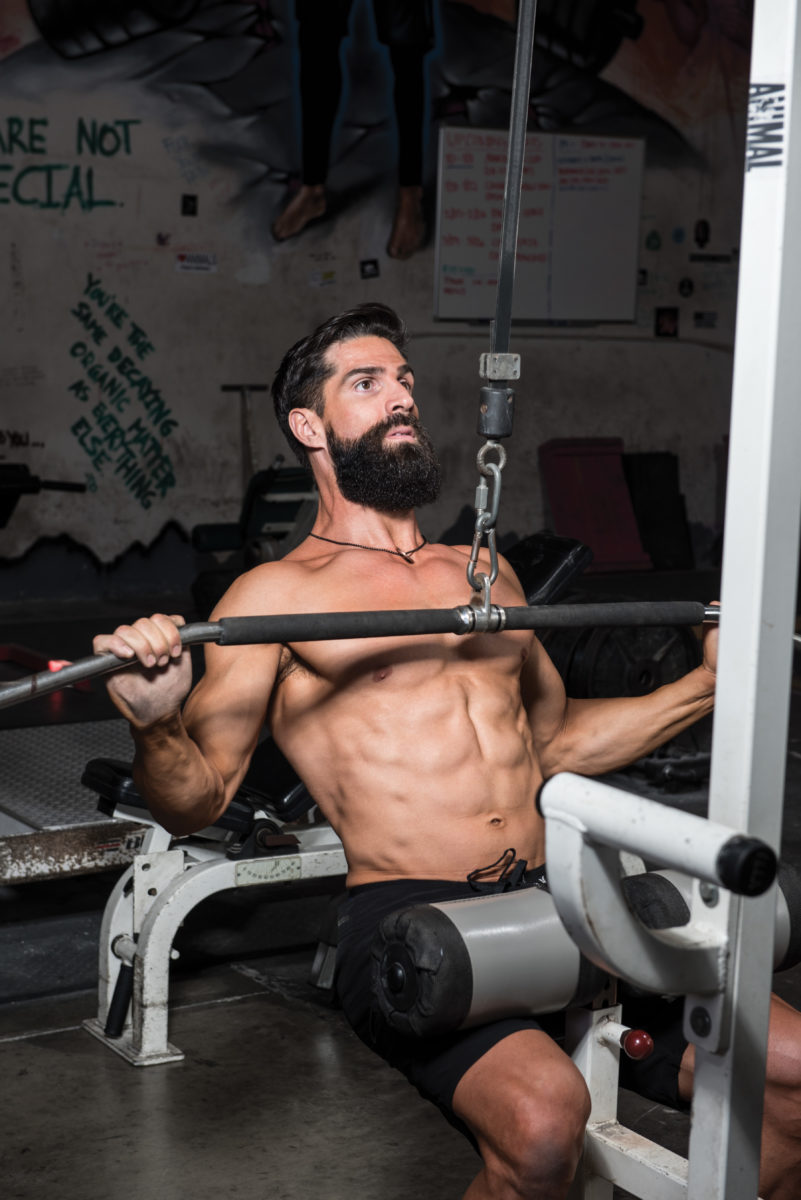
Full-Range Pulldowns
Developing a big, strong back requires a focus on heavy loads. That’s how you develop your base of mass. However, constructing a back with eye-popping detail requires a focus on strict form and targeted muscle contraction. This type of training can actually be tougher to perform properly than simply hammering away with heavy weights. That’s where the full-range pulldown comes in.
There are two primary directions of pull when it comes to your back: vertical and horizontal (think pulldowns and rows). Most back exercises are either one or the other. This exercise incorporates both into one movement, carving the detail into your back that you may be lacking.
Set a light to moderate weight on the stack. You can use any cable attachment for this. The mechanics of the exercise will be the same regardless. Grip the handle and perform a pulldown, inhaling and puffing your chest out as you pull the handle down. This puffed-chest position is critical for lat and upper-back activation. Squeeze the lats hard all the way down to the bottom.
Now, at the bottom of the pulldown, hold the handle in place “in space,” then lean back and row the handle down to your abdomen. Hold the contraction and squeeze the lats hard. Let the handle come back up and bring your torso back up to vertical in one smooth movement.
This two-part movement targets both major movement patterns of your back, covering pretty much all the small “detail” muscles in one shot. Perform sets of 10 to 12 reps, keeping tension on the back muscles during both phases of the exercise.
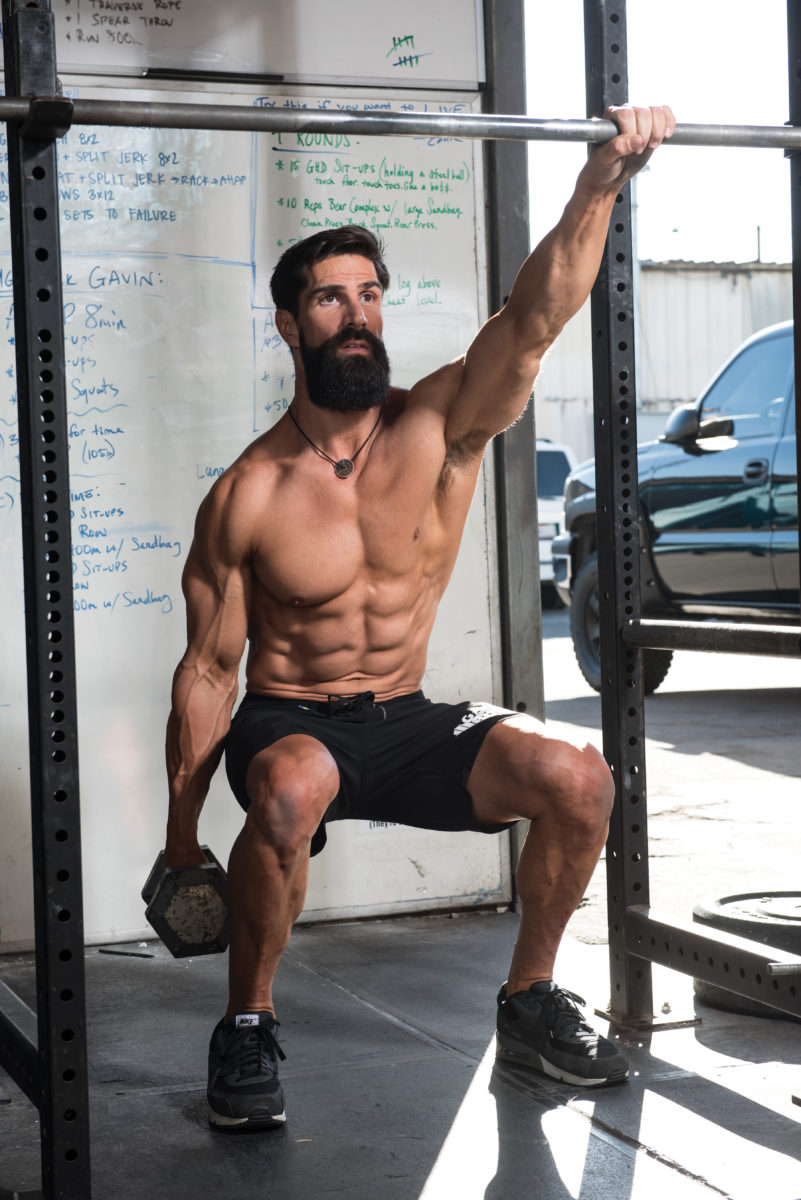
One-Arm Gripping Dumbbell Squats
The squat is called the king of exercises for a reason: It’s a fantastic exercise for lower-body (and total-body) muscle and strength development. No argument there. However, the barbell back squat is not always the most effective version for developing the front of your legs. Quad development via the squat can be severely limited by weaknesses in form, body structure, and strength in supporting muscle groups. You won’t be able to push your quads to the limit if your lower back is always giving out on you.
That’s where this squat variation comes into play. It takes the load off the glutes and hamstrings, almost all the stress off the lower back and most of the torque off the knees.
To perform this exercise, all you need is something solid at about chest height to hold onto, such as a Smith machine bar, a barbell set up on the rails in the power rack, or anything else that is set at an appropriate height and won’t budge.
Next, set two dumbbells on the floor just in front of the bar (moderate-to-heavy weight). Hold onto the bar with your non-working hand, squat down, and grab one of the dumbbells.
Now stand up with the dumbbell, using your other hand to maintain a vertical torso as you do so. This vertical torso position shifts the focus almost entirely onto the quadriceps while taking load off the lower back and knees.
I recommend doing this exercise for high reps, 20 or more per set. This exercise allows you to push your quads until you literally can’t stand up. The grip on the bar can be used to spot yourself, giving just enough assistance to keep the reps cranking until lactate build-up shuts you down.
In order to keep things even, switch the sides you’re gripping on and holding the dumbbell on every five or 10 reps. (This depends on how many reps you’re doing. I recommend five for lower-rep sets, 10 for higher-rep sets). This is where the second dumbbell comes in handy. Instead of moving one dumbbell to the other side, just grip the other dumbbell that you have ready with the other hand and continue.
This exercise will give you a massive quad pump without the overall impact on recovery that a heavy, high-rep barbell squat will demand of you, making it very effective for frequent use for focused quad development.
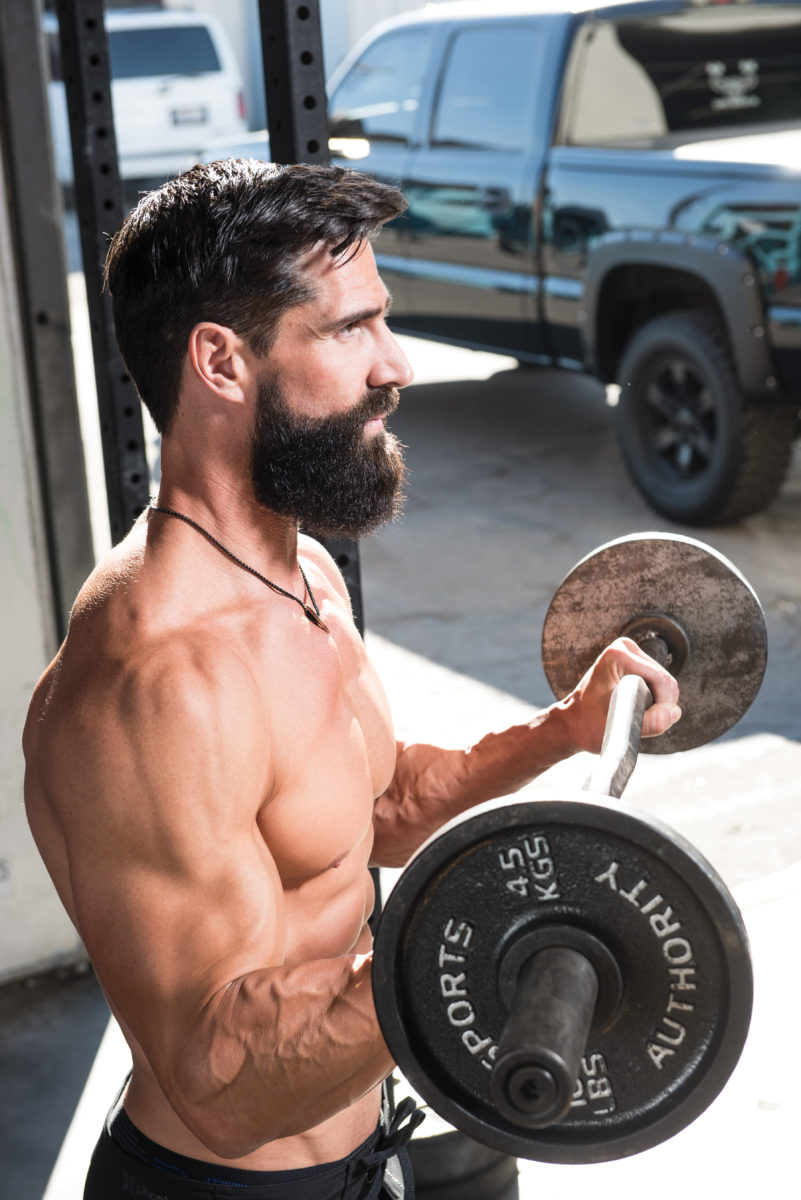
Reverse Curls
Triceps have more of the mass, but biceps get all the glory. Yet the brachialis muscle is the “unsung hero” of the upper arm. Sitting underneath the lower aspect of the biceps, the brachialis muscle is the key to unlocking your true arm-size potential.
The reverse curl is one of the most neglected exercises that every bodybuilder and physique athlete should absolutely should be doing, especially if he or she wants to maximize arm size and biceps peak.
The main issue people have with the reverse curl is that it’s a very humbling exercise, especially when done with the lighter weights that you should be using to effectively isolate the brachialis muscles. When you go too heavy on the reverse curl, it can very easily turn into an ugly clean.
For most people, I suggest starting with just the empty bar. You can increase the weight when you earn it with good form. Grip it with an overhand grip, hands about shoulder-width apart. This exercise will also test your grip strength so make sure you grip the bar hard.
Here’s the key: Once you’ve found your grip, externally rotate your shoulders To do this, rotate your arms so that your inner elbows are facing forward not in toward each other, as is the tendency with this exercise when trying to use too much weight.
Lock your upper arms to your sides so your elbows stay in tight, then curl the bar up with a focused contraction, using no assistance or momentum from your body (i.e., no cheat curls here). When you come to the top, hold for several seconds, then lower slowly and under control. When you come to the bottom, reset your shoulder position and repeat.
Perform sets of eight to 10 reps. The brachialis muscles are small and recover quickly, so take just a one-minute rest in between sets.
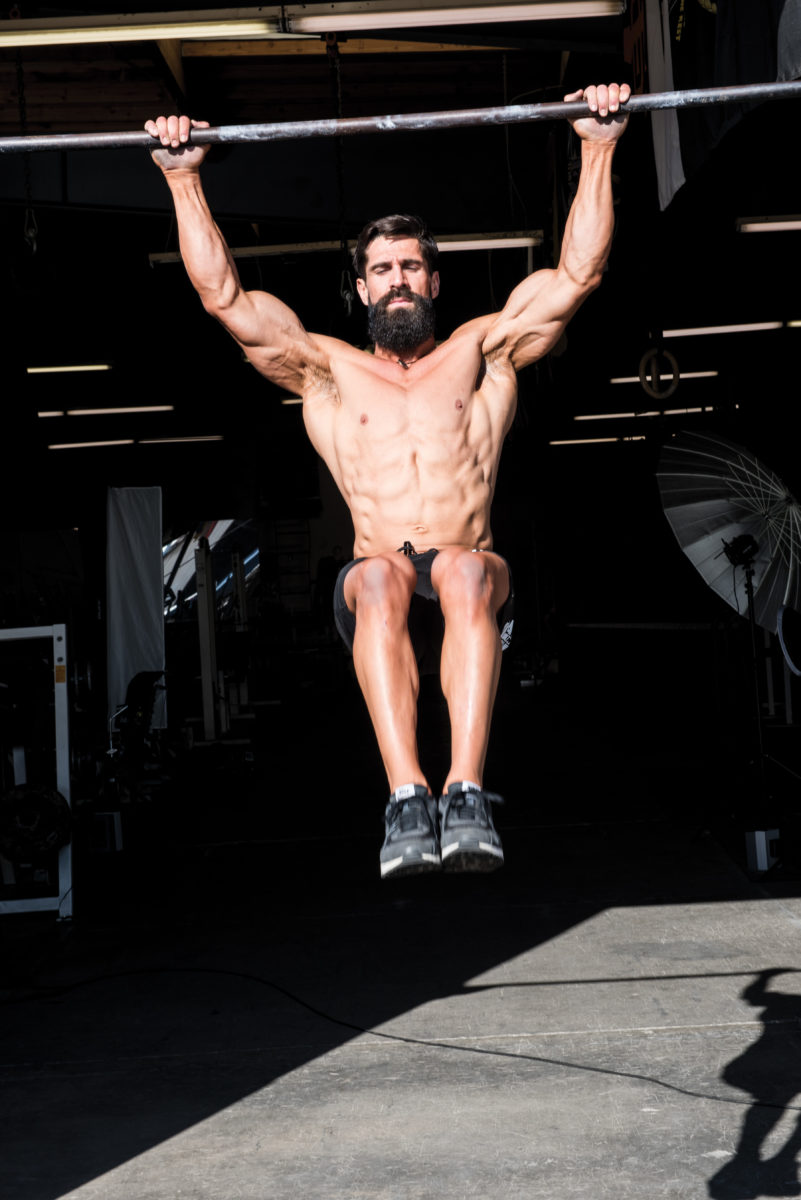
Hanging Knee Raise Variations
The hanging knee raise is a classic abdominal exercise. It’s one of the best overall abdominal exercises you can do. However, it’s also very easy to perform incorrectly, which can shift the focus onto the hip flexors and put torque on the lower back. These issues cause many bodybuilders to eliminate the hanging knee raise exercise from their regimen completely, shortchanging themselves from an incredibly effective lower-abdominal exercise.
This exercise is a small modification that will allow you to put the hanging knee raise back into your routine while also making it even more useful for targeting the entire “sheet” of the rectus abdominis, in addition to the lower abs.
The traditional hanging knee raise is very effective, as are versions where you rotate your knees to the sides. My favorite version is one I call the flexed-arm hanging knee raise. Instead of hanging from a bar with your arms straight, you come up and hold the top of a chin-up. Then you’ll perform the hanging knee raise with your arms flexed 90 degrees.
The chin-up itself is actually an extremely powerful six-pack exercise, as shown by EMG studies. By holding this top chin-up position, you’re effectively engaging the rectus abdominis muscle from two directions at once. Rather than simply drawing the legs up toward your chest, your abs are also contracting to support your body in that top position. It’s a two-pronged attack on your abs while keeping you out of the fully extended position at the bottom of a normal hanging leg raise that contributes to the hip flexor involvement and lower-back torque.
For any version of the hanging leg raise, perform as many reps as you can until either your abs give out or your grip fails.






















You must be logged in to post a comment Login